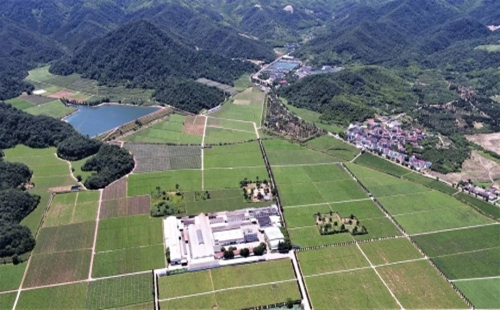Zhejiang highlights 10 archaeological findings in 2020

An aerial view of an ancient tomb dating back to the Southern Song Dynasty (1127-1279) in Shaoxing, East China's Zhejiang province. [Photo/sx.gov.cn]
The Zhejiang Institute of Cultural Relics and Archaeology announced their list of the Major Archaeological Discoveries in Zhejiang in 2020 at a conference it held in late December.
At the conference, archaeologists from across the province made presentations about 18 archaeological excavations and the institute selected 10 programs from them for the final list, based on an overall evaluation of historical importance, research difficulties, and other factors.
The 10 entries of the list are as follows:
1. Relic site in Yuyao's Jingtou Mountain
2. Ruins of ancient paddy field in Yuyao's Shiao village
3. Relic site in Yingjia village of Julonghu town in Ningbo
4. Relic site in Dongmen village of Cicheng town in Ningbo
5. Ancient tombs in Quzhou's Mengjiang village
6. Relic site for the Han Dynasty (206 BC -220) and the following six dynasties in Yuyao's Huayuanxincun community
7. Yijingcheng relic site in Hangzhou's Lin'an district
8. No 2 Cemetery for the Southern Song Dynasty (1127-1279) relic site
9. Relic site of Longquan Kilns in the Yuan Dynasty (1271-1368) in Yongjia's Maan Mountain
10. Former mansion of Wang Shouren (1472-1529) in Shaoxing
The relic site in Yuyao's Jingtou Mountain is the only pre-historic shell mound site ever found in Zhejiang, tracing its history to somewhere between 7,800 and 8,300 years ago.
The discovery of ancient tombs in Quzhou's Mengjiang village has proved that the riparian region of the Qujiang River was a regional hub for the Yue civilization in the Western Zhou Dynasty (11th century BC-771 BC), which coincides with historic records.
The orderly courtyard layout found in the Yijingcheng relic site in Hangzhou's Lin'an district showcases ancient Chinese's remarkable achievement in city planning in the southern region.





 play
play